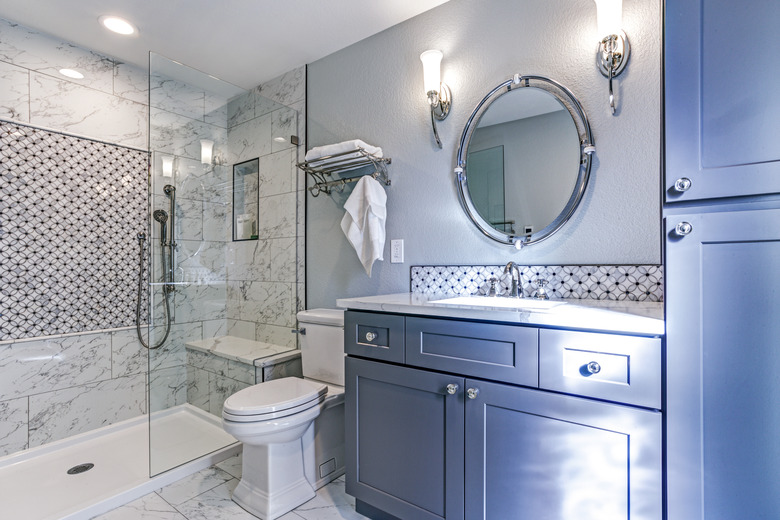Does A Tub Or Shower Need A Trap In The Plumbing?
We may receive a commission on purchases made from links.
P-traps, the curving section of pipe you can see under the sinks in your house, perform a vital function for any plumbing fixture in a building. Shower and bathtub drain pipes must incorporate a P-trap; otherwise the health and safety of anyone in the building will be jeopardized by sewer gases entering the building.
Tip
Yes, shower and tub drains require a trap in the plumbing to prevent harmful sewer gases from coming into the home.
Shower Traps Prevent Sewer Gases
Shower Traps Prevent Sewer Gases
Sewer gases not only smell bad, especially if they invade your home, but they also can harm the health of anyone who inhales them for an extended period.
One of the most dangerous gases that can come up through a drain pipe is carbon monoxide. Carbon monoxide is deadly at high concentrations, but it can cause serious health problems even at low concentrations. According to the Centers for Disease Control and Prevention, symptoms of carbon monoxide poisoning include headaches, dizziness, confusion, and vomiting. There's a serious risk of perishing from carbon monoxide poisoning while you sleep due to prolonged exposure to this gas.
The Wisconsin Department of Health Services notes that another sewer gas — hydrogen sulfide — is also capable of poisoning people who are exposed to it. The presence of methane in an enclosed room will decrease the amount of oxygen in a room, which can cause suffocation. As if these health risks weren't enough reason to avoid sewer gases altogether, both methane and hydrogen sulfide will explode when exposed to open flame. In short, sewer gases in a home puts everyone in the home at risk.
How Traps Provide Protection
How Traps Provide Protection
A P-trap provides protection from sewer gases coming into your house. The sewer gases would travel up the drainpipes from the sewer and eventually exit out the tub or shower's drain if no device were in the way. A P-trap will stop the sewer gases from coming further up the drain line.
Because of the curved shaped of a P-trap, the trap ideally will be full of water at any given time. The sewer gases will rise to the trap but will not travel through the water.
The Role of Vent Pipes
The Role of Vent Pipes
The vent pipes in your home play as important a role in keeping sewer gases out as the P-traps. The sewer gases that cannot escape through the P-trap will instead go up the vent pipe, which exits out of the house's roof. For homes that have a septic tank, this venting will prevent a buildup of gases in the septic tank, which will also put the occupants of the house at risk of an explosion.
Possible Shower Trap Failure
Possible Shower Trap Failure
A P-trap will fail in its function of blocking sewer gases from coming up through a tub or shower's drain if the trap does not stay full of water. Leaks in the P-trap or the connections on either side of the P-trap can empty enough water from the trap that it no longer effectively blocks sewer gases. If nobody uses the bathtub or shower often enough, the water will eventually evaporate out of the trap. How quickly the water evaporates will depend on the humidity levels in your area.
